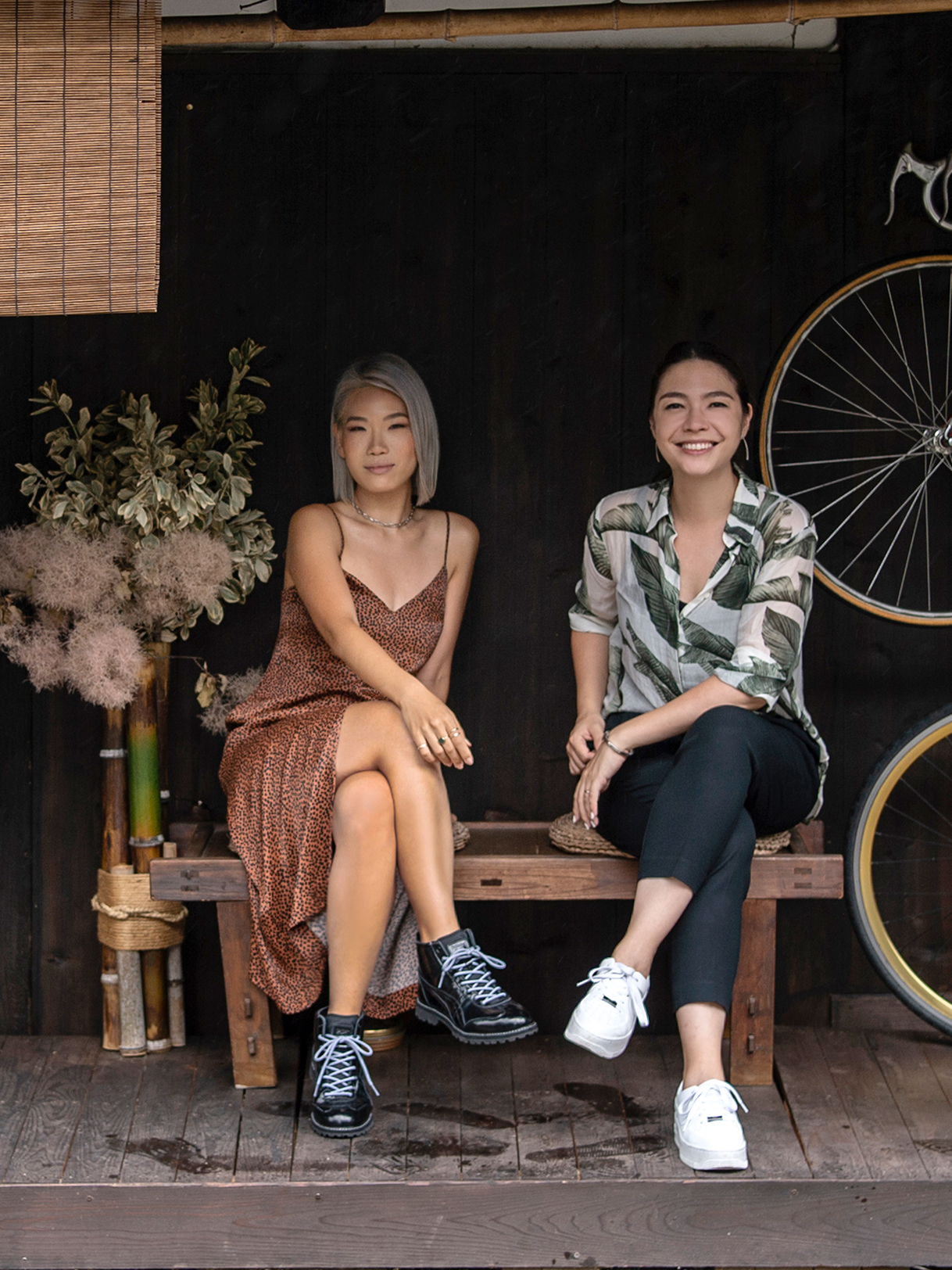We may earn revenue from the products available on this page and participate in affiliate programs.
In our Ask a Shopkeeper series, we tap the coolest store owners we know for a tour of their space and to ask them what items are trending right now—and beyond. For this installment, Tina Koyama and Hana Tsukamoto—the cofounders of POJ Studio, a decor store connected to a café and vacation rental in Kyoto, Japan—take us inside their traditional Japanese townhouse–turned–retail shop.

How do you hope the machiya [traditional Japanese townhouse] design will impact the experience for customers shopping at POJ?
Tina Koyama: It was important to us that the space feel less like a gallery, since Kyoto tends to have a lot of shops that feel a bit unapproachable, detached from our daily lives. Bringing a dining table and lounge sofa into the space was to make it easy to imagine your living room and dining room, and for our customers to have a place to sit down and drink a cup of tea while simply enjoying the moment.
Hana Tsukamoto: Having that cozy feeling of a home has always been an inspiration of ours. We want to help our customers see what our products will look like inside their own places. In addition, the concept for this project is that all four areas (the shop, restaurant, and two apartments) act like our big house, and the customers are our guests—POJ is our living room, Maana is the bedroom, and Kissa is the kitchen. Our customers can really experience our products being used everywhere.

You started POJ (Pieces of Japan) as an e-commerce site. What made you want to launch a brick-and-mortar space now?
Tsukamoto: We felt that, especially after the pandemic, it was important to get reconnected to people and feel the crafts in your own hands while shopping. We also believe it’s important to showcase our products, not just in one setting, but in every type of space. We want to inspire our customers and show them that these products really look beautiful anywhere.
Koyama: We created a place where you can not just shop but also experience the pieces in a rustic yet contemporary environment—while staying at Maana Homes and taking out a toothbrush from the amenity box, or enjoying breakfast eating from our plates at Kissa Kishin, for example.



Tell us about the process of restoring the machiya.
Tsukamoto: These houses were in terrible condition when we first saw them, and we were unsure how much of the original structure we could save. Every layer we peeled off, we discovered something new, so every step of the way, our design direction would be affected by these discoveries. We had to stay flexible. Our aim was always to keep the essence of machiya—the rustic materials and the structures—but we wanted to make it modern. To achieve that, we raised the ceiling height to bring more light into the space. For our kintsugi workshop room upstairs, again, we brought in more light by removing the walls and putting up custom koshi (Japanese lattice panels).
Koyama: During the restoration, we discovered old clay walls with beautiful textures that we decided to keep instead of covering them with plaster. All the pillars as well as the roof were kept, and we brought the garden back.



Why was it important to bring the green space back to life?
Tsukamoto: When we first purchased these houses, the garden was completely gone, but we knew this was something essential in the life of a machiya. In the process of reviving it, we focused on the native plants that you would see in the mountains, but we kept the garden design modern.
Koyama: Bringing the beauty of the four seasons into our daily lives is also a key aspect of Japanese culture and qualities that many architects have been inspired by for decades.

What are some of the traditional Japanese techniques that shoppers can expect to see or learn about at POJ Studio?
Koyama: Our pieces feature more than 20 traditional crafts, starting with urushi lacquer techniques that are the foundation of kintsugi, traditionally made incense, natural indigo tie-dye techniques, sashimono wood joinery, and more.
Tsukamoto: In addition to all the beautiful crafts, we carry our original DIY kits, so our customers can also learn how to make them!


What are some of your best-selling home pieces?
Koyama: Our Kintsugi Kit. It can be studied with self-paced classes as well as in person or virtual sessions. Our incense and indigo wall pieces have also been loved by our customers.


Shop Talk
Music that’s always playing in our store: Instrumental lo-fi jazz.
Dream person to walk into POJ Studio: Colin King, Athena Calderone, Norm Architects, Alex Kerr, Axel Vervoordt.
Favorite nearby shop that’s not our own: Oud.
Favorite home piece in stock right now: Oryoki.
